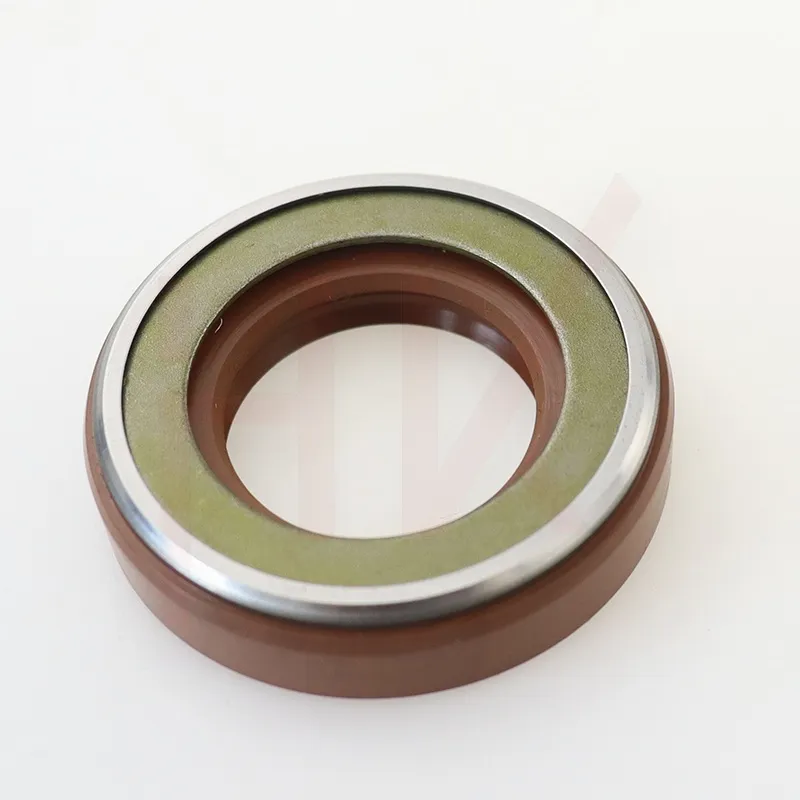Dec . 18, 2024 23:11 Back to list
wiper seal hydraulic cylinder
Understanding Wiper Seals in Hydraulic Cylinders
Hydraulic cylinders are essential components in various machinery and equipment, enabling controlled movement and force generation. One critical aspect of hydraulic cylinders is the sealing system, which ensures that hydraulic fluid is contained within the cylinder while preventing contaminants from entering. Among the various seals employed in hydraulic systems, the wiper seal plays a prominent role. This article explores the function, design, and importance of wiper seals in hydraulic cylinders.
What is a Wiper Seal?
A wiper seal, often referred to as a dirt ring or scraper seal, is a component designed to prevent contaminants like dust, dirt, and moisture from entering the hydraulic cylinder. Positioned at the external end of the cylinder, the wiper seal acts as the first line of defense against external contaminants, ensuring that the internal environment remains clean. This is crucial because even minute particles can cause significant damage to the internal parts of the hydraulic cylinder, such as the piston and rods.
Function of Wiper Seals
The primary function of the wiper seal is to maintain the purity of the hydraulic fluid by keeping out harmful debris. When the hydraulic cylinder is extended or retracted, the rod moves in and out of the cylinder, and this movement can draw in dirt and moisture from the surrounding environment. The wiper seal effectively scrapes off any contaminants that adhere to the rod’s surface as it exits the cylinder. Thus, the wiper seal protects the internal seals from wear and tear, prolonging the overall life of the hydraulic system.
Design Considerations
Wiper seals are typically made from materials such as polyurethane, rubber, or various engineered polymers. The choice of material depends on the specific application, environmental conditions, and compatibility with the hydraulic fluid. The design of wiper seals can also vary, with options like flat wipers, contoured wipers, and those featuring multiple lips to increase their sealing effectiveness.
Key design considerations for wiper seals include
wiper seal hydraulic cylinder

1. Dynamic Characteristics The wiper must accommodate the dynamic movement of the rod, ensuring a tight fit during both extension and retraction cycles. 2. Contamination Resistance The seal design should effectively scrape off any debris while also resisting wear from abrasive particles. 3. Temperature and Fluid Compatibility The materials used must withstand the temperature variations and chemical properties of the hydraulic fluid.
4. Installation Ease The design should facilitate easy installation without compromising sealing performance.
Importance in Hydraulic Systems
The significance of wiper seals in hydraulic cylinders cannot be understated. A well-functioning wiper seal directly impacts the efficiency and reliability of hydraulic systems. By preventing contamination, wiper seals not only maintain the cleanliness of hydraulic fluid but also
- Minimize Maintenance Costs Effective wiper seals reduce the frequency of maintenance tasks required for hydraulic systems, thus lowering operational costs. - Enhance System Lifespan By protecting the internal components from wear and tear, wiper seals contribute to extending the overall lifespan of the hydraulic cylinder.
- Improve Performance A clean hydraulic environment leads to better performance and efficiency, ensuring that machinery operates smoothly and effectively.
Conclusion
In conclusion, wiper seals are crucial components in hydraulic cylinders, serving the vital function of keeping contaminants at bay. Their design and construction are integral to the performance and durability of hydraulic systems. As industries continue to evolve and demand more precision and reliability from hydraulic machinery, the role of wiper seals will remain indispensable. Understanding their function and importance can help engineers and maintenance professionals enhance hydraulic system efficiency and longevity, ensuring smooth operations across various applications.
-
TCN Oil Seal Metal Ring Reinforcement for Heavy Machinery
NewsJul.25,2025
-
Rotary Lip Seal Spring-Loaded Design for High-Speed Applications
NewsJul.25,2025
-
Hydraulic Cylinder Seals Polyurethane Material for High-Impact Jobs
NewsJul.25,2025
-
High Pressure Oil Seal Polyurethane Coating Wear Resistance
NewsJul.25,2025
-
Dust Proof Seal Double Lip Design for Construction Equipment
NewsJul.25,2025
-
Hub Seal Polyurethane Wear Resistance in Agricultural Vehicles
NewsJul.25,2025
-
The Trans-formative Journey of Wheel Hub Oil Seals
NewsJun.06,2025
Products categories
















